
Colonel Joseph William Kittinger II is a retired officer in the United States Air Force (USAF) and a Command Pilot. His initial operational assignment was in fighter aircraft, then he participated in the Project Manhigh and Project Excelsior high-altitude balloon flight projects from 1956 to 1960 and was the first man to fully witness the curvature of the Earth. He set a world record for the highest skydive: 102,800 feet (31.3 km) on August 16, 1960.
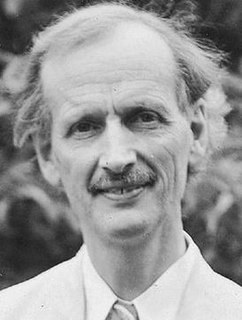
Jean Felix Piccard, also known as Jean Piccard, was a Swiss-born American chemist, engineer, professor and high-altitude balloonist. He invented clustered high-altitude balloons, and with his wife Jeannette, the plastic balloon. Piccard's inventions and co-inventions are used in balloon flight, aircraft and spacecraft.
QinetiQ 1 was a balloon designed to set a new world altitude record for manned balloon flight of around 40 km. The balloon was named after the main sponsors, QinetiQ.

A window blind is a type of window covering. There are many different kinds of window blinds which use a variety of control systems. A typical window blind is made up of several long horizontal or vertical slats of various types of hard material, including wood, plastic or metal which are held together by cords that run through the blind slats. Vertical blinds run along a track system which can tilt open and closed and move side-to-side. Window blinds can be manoeuvred with either a manual or remote control by rotating them from an open position, with slats spaced out, to a closed position where slats overlap and block out most of the light. There are also several types of window coverings, called shades, that use a single piece of soft material instead of slats.
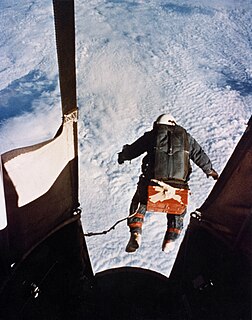
Project Excelsior was a series of parachute jumps made by Joseph Kittinger of the United States Air Force in 1959 and 1960 from helium balloons in the stratosphere. The purpose was to test the Beaupre multi-stage parachute system intended to be used by pilots ejecting from high altitude. In one of these jumps Kittinger set world records for the longest parachute drogue fall, the highest parachute jump, and the fastest speed by a human through the atmosphere. He held the latter two of these records for 52 years, until they were broken by Felix Baumgartner of the Red Bull Stratos project in 2012, though he still holds the world record for longest time in free fall.
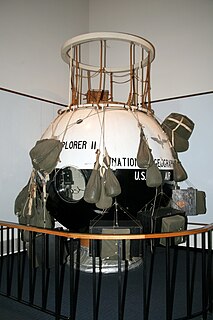
Explorer II was a manned U.S. high-altitude balloon that was launched on November 11, 1935, and reached a record altitude of 22,066 m (72,395 ft). Launched at 8:00 am from the Stratobowl in South Dakota, the helium balloon carried a two-man crew consisting of U. S. Army Air Corps Captains Albert W. Stevens and Orvil A. Anderson inside a sealed, spherical cabin. The crew landed safely near White Lake, South Dakota, at 4:13 pm and both were acclaimed as national heroes. Scientific instruments carried on the gondola returned useful information about the stratosphere. The mission was funded by the membership of the National Geographic Society.

Skyhook balloons were high-altitude balloons developed by Otto C. Winzen and General Mills, Inc. They were used by the United States Navy Office of Naval Research (ONR) in the late 1940s and 1950s for atmospheric research, especially for constant-level meteorological observations at very high altitudes. Instruments like the Cherenkov detector were first used on Skyhook balloons.
Otto C. Winzen (1917–1979) was a German-American aeronautics engineer who made significant advances in the materials and construction of high-altitude balloons after World War II.

Romanian Cosmonautics and Aeronautics Association, also known as ARCAspace, is an aerospace company based in Râmnicu Vâlcea, Romania. It builds rockets, high-altitude balloons, and unmanned aerial vehicles. It was founded in 1999 as a non-governmental organization in Romania by the Romanian engineer Dumitru Popescu (entrepreneur) and other rocket and aeronautics enthusiasts. Since then, ARCA has launched two stratospheric rockets, four large scale stratospheric balloons including a cluster balloon and was awarded two governmental contracts with the Romanian government and one contract with the European Space Agency. ARCASpace is currently developing a three-stage, semi-reusable steam-powered rocket called EcoRocket.
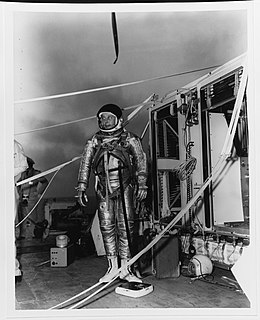
Lieutenant Commander Victor Alonzo Prather Jr. was an American flight surgeon famous for taking part in "Project RAM", a government project to develop the space suit. On May 4, 1961, Prather drowned during the helicopter transfer after the landing of the Strato-Lab V balloon flight, which set an altitude record for manned balloon flight which stood until 2012.

Malcolm David Ross was a captain in the United States Naval Reserve (USNR), an atmospheric scientist, and a balloonist who set several records for altitude and scientific inquiry, with more than 100 hours flight time in gas balloons by 1961. Along with Lieutenant Commander Victor A. Prather (USN), he set the altitude record for a manned balloon flight.

This listing of flight altitude records are the records set for the highest aeronautical flights conducted in the atmosphere, set since the age of ballooning.

Similar to skydiving, space diving is the act of jumping from an aircraft or spacecraft in near space and falling towards Earth. The Kármán line is a common definition as to where space begins, 100 km (62 mi) above sea level. This definition is accepted by the Fédération Aéronautique Internationale (FAI), which is an international standard setting and record-keeping body for aeronautics and astronautics. The United States Air Force uses 50 mi (80 km) to award astronaut wings.

Project Strato-Lab was a high-altitude manned balloon program sponsored by the United States Navy during the 1950s and early 1960s. The Strato-Lab program lifted the first Americans into the upper reaches of the stratosphere since World War II. Project Strato-Lab developed out of the Navy's unmanned balloon program, Project Skyhook. The program was established in 1954 and administrated by Commander Malcolm Ross. Malcolm Ross and others developed the program to accomplish research required for the manned rocket program to follow. This program provided biomedical data that was used for subsequent efforts in space. Malcolm Ross launched five numbered flights as well as other unnumbered flights.

The Stratobowl is a compact natural depression within the limits of Black Hills National Forest in South Dakota, south-west of Rapid City. In 1934–1935 it housed a stratospheric balloon launch site, initially known as Stratocamp, sponsored by the National Geographic Society and the United States Army Air Corps. In 1956–1959 the site was reused by the U.S Navy Project Strato-Lab.

Nicholas John Piantanida was an American amateur parachute jumper who reached 123,500 feet with his Strato Jump II balloon on February 2, 1966, flying a crewed balloon higher than anyone before, a record that stood until Felix Baumgartner's flight on October 14, 2012.
Raven Industries, Inc. is an American company that manufactures precision agriculture products, high-altitude balloons, plastic film and sheeting, and radar systems. The company was founded in 1956. Their headquartered in Sioux Falls, South Dakota. Stock in the company was traded on Nasdaq until 2021 when it was acquired by CNH Industrial.
For environmental monitoring, Project Grab Bag was an air sampling program conducted in the United States in the stratosphere of above-ground nuclear weapons testing in the Soviet Union.
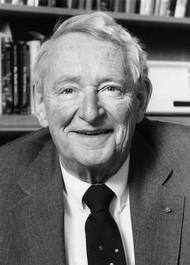
Edward Purdy Ney was an American physicist who made major contributions to cosmic ray research, atmospheric physics, heliophysics, and infrared astronomy. He was a discoverer of cosmic ray heavy nuclei and of solar proton events. He pioneered the use of high-altitude balloons for scientific investigations and helped to develop procedures and equipment that underlie modern scientific ballooning. He was one of the first researchers to put experiments aboard spacecraft.

Vera Simons (1920–2012) was an inventor, artist, and balloonist. She became known in the 1950s and 1960s as a leader in high altitude gas balloon development and exploration, belonging to a group of pioneers known as the "Pre-Astronauts."














